Healthy Eating. What is a healthy diet? Eating a healthy diet is not about strict limitations, staying unrealistically thin, or depriving yourself of the foods you love. Rather, it’s about feeling great, having more energy, improving your health, and boosting your mood.
Healthy eating doesn’t have to be overly complicated. If you feel overwhelmed by all the conflicting nutrition and diet advice out there, you’re not alone. It seems that for every expert who tells you a certain food is good for you, you’ll find another saying exactly the opposite. The truth is that while some specific foods or nutrients have been shown to have a beneficial effect on mood, it’s your overall dietary pattern that is most important. The cornerstone of a healthy diet should be to replace processed food with real food whenever possible. Eating food that is as close as possible to the way nature made it can make a huge difference to the way you think, look, and feel.
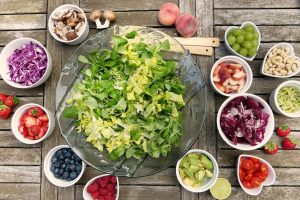
The fundamentals of healthy eating while some extreme diets may suggest otherwise, we all need a balance of protein, fat, carbohydrates, fibre, vitamins, and minerals in our diets to sustain a healthy body. You don’t need to eliminate certain categories of food from your diet, but rather select the healthiest options from each category.
Protein gives you the energy to get up and go, and keep going, while also supporting mood and cognitive function. Too much protein can be harmful to people with kidney disease, but the latest research suggests that many of us need more high-quality protein, especially as we age. That doesn’t mean you have to eat more animal products, a variety of plant-based sources of protein each day can ensure your body gets all the essential protein it needs. Fat. Not all fat is the same. While bad fats can wreck your diet and increase your risk of certain diseases, good fats protect your brain and heart. In fact, healthy fats, such as omega-3s, are vital to your physical and emotional health. Including more healthy fat in your diet can help improve your mood, boost your well-being, and even trim your waistline.
Fibre. Eating foods high in dietary fibre (grains, fruit, vegetables, nuts, and beans) can help you stay regular and lower your risk for heart disease, stroke, and diabetes. It can also improve your skin and even help you to lose weight. Calcium. As well as leading to osteoporosis, not getting enough calcium in your diet can also contribute to anxiety, depression, and sleep difficulties. Whatever your age or gender, it’s vital to include calcium-rich foods in your diet, limit those that deplete calcium, and get enough magnesium and vitamins D and K to help calcium do its job. Carbohydrates are one of your body’s main sources of energy. But most should come from complex, unrefined carbs (vegetables, whole grains, fruit) rather than sugars and refined carbs. Cutting back on white bread, pastries, starches, and sugar can prevent rapid spikes in blood sugar, fluctuations in mood and energy, and a build-up of fat, especially around your waistline.

Healthy eating for children
Children need regular meals and snacks to get the energy (calories) and goodness or ‘nutrients’ they need for growing and fighting off illness. Children’s nutritional needs change as they get older, so it is important to be aware of these changes.
 Family eating
Family eating
Eating family meals together helps encourage children to enjoy a variety of foods and to spend time with the family. It is a good idea to eat together as a family at the table and not alongside other activities, for example watching the TV, to prevent distractions.
Breakfast is the most important meal of the day. Children who have breakfast have been shown to concentrate better throughout the morning. Offer a savoury and a sweet course at both lunchtime and at the evening meal, so children have a variety of different foods and nutrients.
Try to put a jug of water on the table to keep everyone hydrated. Plus there is some evidence that children who drink extra water perform better in attention and memory tests!
Healthy foods
The nutrients children need are found in these main food groups. They should all be offered every day:
Bread, rice, potatoes, pasta and other starchy foods
Each meal should be based on food from this group. This includes bread, potatoes, pasta, rice and grains such as couscous or breakfast cereal at main meals and scones, buns, muffins, crumpets or cereal bars for snacks. For children who are over five-years-old, wholegrain varieties are a better option, these are healthier and more filling.
Fruit and vegetables
Aim for five portions of fruit and vegetables every day. These can be fresh, frozen, tinned (in own juice), dried or juice. Fruit juice can be given as a drink at mealtimes. Try to include both fruit and vegetables at main meals and fruit can be used as a snack or to make smoothies.
Milk and dairy foods
This group provides children with protein and calcium which is important for healthy bone development. Good sources include dairy products such as milk, cheese, yoghurt and fromage frais. Non-dairy alternatives to cows milk can be given from one year of age. Ensure they are fortified with calcium and unsweetened. If you need more advice, do talk to a health professional.
Your child should ideally aim for three servings of calcium-rich food a day – for example, a 150ml glass of milk, a small pot of yoghurt and a small matchbox-sized piece of cheese. Children under five years are growing rapidly and therefore have a higher requirement for energy. For this reason, children under two years should have full fat milk and dairy foods. Semi-skimmed milk can be introduced from two years if they are growing well. Children over the age of five should follow a healthy diet suitable for all the family.
Meat, fish, eggs, beans and other non-dairy sources of protein
Meat, fish, eggs, nuts, pulses (like beans, lentils and peas) and foods made from pulses (like tofu, hummus and soya mince) are excellent sources of protein and iron. A variety of these foods are needed two to three times a day.
Oils and spreads
Choose unsaturated oils and use in small amounts.
Foods and drinks high in fat and/or sugar
Foods which are high in sugar and fat will provide extra energy but few nutrients. This group includes biscuits, cake, ice cream, sweets, chocolate, savoury snacks such as crisps, chips and sugary drinks.
High sugar intakes often lead to tooth decay. It is important to avoid giving your child frequent sugary drinks, snacks or sweets to protect their teeth and overall health. If you want to give them something sugary, it is best at mealtimes.
Only offer foods in this group occasionally. Why not grill, steam or bake foods instead of frying them and use a smaller amount of butter, margarine or oil in cooking or on bread.
 Drinks
Drinks
The best drinks for children are water and milk as they will not damage teeth. Fizzy drinks and squashes can provide excess energy and lead to unnecessary weight gain, and/or replace something more nutritious.
Pure fruit juice and smoothies provide quite a lot of sugar. Dilute any sweet drinks with water – one part squash to ten parts water or half pure juice/half water for children under five – where possible and offer at mealtimes only.
Offer children a drink with each meal and one or two drinks in-between. It is a good idea to offer extra drinks when it is hot and during sport. Tea reduces iron absorption so it’s not an ideal drink, why not offer warm milk instead.
Salty foods
Children do not need salt added to their food – try using herbs and spices instead. It is a good idea to limit salty snacks like crisps and reduce the amount of processed salty foods such as ready meals.
Summary
Food and eating can be great fun! Children love to get involved, so take them to the shops to help choose different foods, let them help with cooking and talk about healthy eating.
This can help encourage children to try new foods and make it a pleasurable experience for the whole family.
Are We A Nation Of Sofa Chefs?
The huge popularity of TV's Come Dine With Me and a string of spin-offs would suggest that Britain is a nation of dinner party devotees.
But while the hit Channel 4 series has sparked a renewed interest in dinner parties with charity fundraisers staged across the country, it seems that most of us find they cost too much - financially and emotionally.
And although we enjoy watching the show's clumsy chefs cook up a disaster and deride their efforts with claims about our own culinary skills, the evidence reveals a very different picture.
A report from ingredients specialist Very Lazy, conducted by YouGov, has found that nearly 19 million austerity-hit Brits don't have an appetite for dinner parties as they involve too much time and money, with 27% of those polled put off altogether by the stress of playing host.  The Very Lazy Cooking Census surveyed 2,070 people about their cooking habits and kitchen know-how and found that while we're a nation of cocksure cooks with more than three quarters saying they are very or fairly confident in their skills, a lot of us aren't too clued up on our cuisine. Just seven per cent of those polled could identify three ingredients from the popular spag bol Bolognese sauce and less than half can make a basic roux. And although TV is coming down with male celebrity chefs, men prove to be the most clueless in the kitchen. Half of women say they could make a basic roux but 44% of men admitted to not even knowing what a roux is!
The Very Lazy Cooking Census surveyed 2,070 people about their cooking habits and kitchen know-how and found that while we're a nation of cocksure cooks with more than three quarters saying they are very or fairly confident in their skills, a lot of us aren't too clued up on our cuisine. Just seven per cent of those polled could identify three ingredients from the popular spag bol Bolognese sauce and less than half can make a basic roux. And although TV is coming down with male celebrity chefs, men prove to be the most clueless in the kitchen. Half of women say they could make a basic roux but 44% of men admitted to not even knowing what a roux is!
Almost a quarter of men don't have a clue what root ginger looks like, with three per cent mistaking it for either an artichoke, truffle or garlic! And despite the male love of food, only a fifth are very confident in their cooking ability - perhaps because 15% of them admit to eating at home but never cooking. The national snapshot reveals Wales and Northern Ireland as home to the hardest working cooks with 43% preparing meals on a daily basis, compared to the lazier cooks in the North East where only 18% cook every day.
The entertaining capital of the UK is London, where 19% love to host dinner parties, while Scots proved to be the most adventurous in the kitchen with 48% saying they love to make new dishes.
People in the South West are the most organised with 37% of them displaying organisational skills when it comes to food planning and Yorkshire and the Humber is home to the least knowledgeable with nearly a quarter of people having no idea what root ginger looks like. The researchers also found:
* 42% of us love making new dishes but almost 8 million of us don't have the time to try out new recipes.
* Almost four million people usually buy ready-made meals
* The majority - 47% - use a shortcut or two when cooking.
* A quarter of cooks say their cooking style resembles Jamie Oliver - quick and tasty.
* Only 28% of us do a weekly shop and know what we're making most nights.
* 2.2 million men think 'cooking from scratch' is buying all ready-made ingredients
* 43% of women cook seven days a week compared to just 26% of men.
* Retirees are the top culinary whizzes - almost a third say they are very confident in their skills and 52% usually cook from scratch.
Very Lazy's Head Development Chef Rob Cottam says: "It's great to see that the UK is so confident in the kitchen - even if some of us do need a bit more encouragement! Our food knowledge may need some work but don't worry!
"We all have recipe books, friends and family to teach us and there are so many great shortcuts that we can use rather than struggling to remember lots of complicated recipes. So come on Britain, let's get cooking!"
Beginner's Guide to Wine
At first glance the subject of wine can seem overwhelming and frankly rather intimidating, what with sniffing the bouquet and judging the finish a novice wine taster could easily be put off. However there really is no need, as all you need to remember is that wine is supposed to be enjoyable, so simply buy the wine you most like the taste of regardless of current fashions or trends.
To help you get started there are just three simple steps to remember when choosing a wine: look, smell and taste. But if you have time and the inclination, understanding the basics of wine types, selections, storage and tasting will add new dimensions to your wine experience.  A good way to get to know more about wine is to start by taking a grape variety you know, then work your way through different examples from around the world. Lovers of Aussie Chardonnay, for instance, might enjoy barrel-matured white Burgundy. Or if you've already discovered fruit-filled Chilean Cabernet, then you really need to try the aristocratic reds of Bordeaux.
A good way to get to know more about wine is to start by taking a grape variety you know, then work your way through different examples from around the world. Lovers of Aussie Chardonnay, for instance, might enjoy barrel-matured white Burgundy. Or if you've already discovered fruit-filled Chilean Cabernet, then you really need to try the aristocratic reds of Bordeaux.
Find out for yourself why the wines of New Zealand have become so popular, or experience the everlasting appeal of Burgundy. Just a few rungs up the price ladder, flavours become more intense, making it far easier to stick to a single glass. When exploring, don't be afraid to ask questions of waiters or shop staff - if properly trained they will be full of useful advice. Generally speaking a good wine can be purchased for well under £10 these days, but try to avoid the really cheap offers, as these are rarely the best value for money. Excise duty, VAT, transport and packaging are virtually the same whether it's a basic vin de table or from a prestigious estate. By paying a little extra - say £5 to £7 - you get a big increase in wine quality.
If you find the thought of buying wine in a specialist wine shop too daunting, then why not buy from the comfort of your armchair? More people are ordering their wine online thanks to the convenience and range of wines on offer. Online wine merchants invariably provide more information about their wines than you will find on the label when perusing the supermarket shelves.
When pairing wine with a specific food or meal there are just a few things to remember. Like a good marriage, wine and food were meant for each other, as each enhances and strengthens the experience of the whole. So why does it feel so daunting to try to pair foods with wines? If you are under the misapprehension that there is a hefty list of rules and guidelines that state which wine can be paired with which food then you are in for a surprise.
The truth is there are no rules when matching your favourite wines with your favourite recipes. Yes there are popular matches and well-used pairings of wine and food but ultimately the best match is what pleases your palate. It is truly a personal preference, but if you don't feel confident enough to trust your own taste you can always ask for some more experienced advice.
With expert wine merchants available at your fingertips it has become a whole lot easier to learn more about wines and enjoy them at very competitive prices. The only golden rule would be to avoid cheap supermarket wine and you'll discover a little good wine really does go a long way.
Drinking enough?
We all know that not drinking enough water is bad for you, but it seems drinking too much can be equally bad, according to recent reports. With all these mixed messages it's hardly surprising that many of us are left wondering how much water is enough.
As most of us know, it's very important to make sure we are drinking enough because our bodies need water and other fluids to work properly. Water makes up about two-thirds of our body weight. It's important for this to be maintained because most of the chemical reactions that happen in our cells need water.
Our blood also needs water to carry nutrients around the body as well as to expel toxins. As your body works it produces waste products, some of which are toxic. These are got rid of through the kidneys in urine, and urine is mainly made up of water.
Unfortunately, we lose a lot of this water through evaporation, when we breathe and sweat. As the temperature rises or as we do more activity, this increases the amount of water the body loses. As a result you need to replace the fluids you lose to stay healthy.
In the British climate, we should drink approximately 1.2 litres (six to eight glasses) of fluid a day to stop us becoming dehydrated. In hotter climates the body needs more than this. It's also worth remembering that we get some fluid from the food we eat.
While it's not wrong to drink caffeine, its best to avoid too much, particularly when it is very hot or you are in danger of becoming dehydrated. This is because drinks that contain caffeine, such as tea, coffee and cola, can act as mild diuretics, which means they make the body produce more urine. This affects some people more than others, but it also depends on how much caffeine you drink and how often.  It's fine to drink these sorts of drinks, but we should also try to drink some fluids each day that don't contain any caffeine. This shouldn't be too difficult, as there are plenty of options. You don't just have to stick to plain water. A few drops of fruit juice in a glass of water gives it an instant injection of flavour, while a pure fruit juice or home-made lemonade makes a welcome change from tap water on its own.
It's fine to drink these sorts of drinks, but we should also try to drink some fluids each day that don't contain any caffeine. This shouldn't be too difficult, as there are plenty of options. You don't just have to stick to plain water. A few drops of fruit juice in a glass of water gives it an instant injection of flavour, while a pure fruit juice or home-made lemonade makes a welcome change from tap water on its own.
However, if you should fall foul of the recommended drinking guidelines, you could find yourself battling dehydration, so it worth remembering the tell-tale signs. One of the first is feeling thirsty. Then you may feel tired and lethargic, which will decrease your capacity for exercise. This is why extra fluid is needed in hot weather or during strenuous activity. For each hour of exercise you should drink an extra litre of fluid. If you have an illness that is causing sickness, diarrhoea or sweating, you will need to up your fluid intake to make up for the extra loss.
If you think you might not be getting enough fluids, check if you are showing any of these other common signs of dehydration:
1. Dark-coloured urine and not passing much when you go to the toilet
2. Headaches
3. Confusion and irritability
4. Lack of concentration
The Natural Remedy
When you feel the onset of a cold are you more likely to reach for the paracetamol or the Echinacea? If it's the latter then you're not alone, as more of us are turning to natural remedies over traditional ones, according to a recent study.
Once thought of as old wives tales or airy-fairy, alternative remedies from natural sources are now used by 61 per cent of adults, says a report by honey producer Rowse. Natural remedies such as honey and lemon are used by 72 per cent of us, while 48 per cent of us use Echinacea for the relief of colds. A third of us would look to herbal remedies such as St John's Wort for the relief of mild depression, says the report. 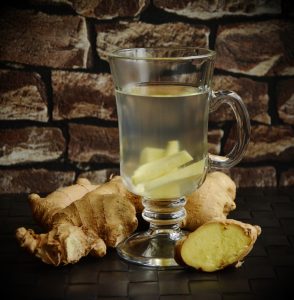 An increasing disillusionment with traditional medicine is behind this trend for natural remedies, according to the report. As a result, traditional medicines such as paracetamol, anti-depressants and flu remedies are being shunned in favour of alternative treatments. In fact, half of UK adults admitted they were more likely to use natural-based remedies today than five to 10 years ago. However, it's not just herbs we reach for when we're not feeling well. Foods are also helping us to battle conditions such as colds and high cholesterol. You might use aromatic root vegetable garlic in a recipe, but 58 per cent of us have used it to boost our immune function and lower our blood pressure. It's not only garlic and honey that people have been raiding the larder for - protein-rich almonds are not only a delicious snack but are used by 43 per cent of us to help reduce cholesterol. Similarly, a refreshing glass of pomegranate juice is the remedy chosen by 48 per cent of people to help keep their hearts healthy.
An increasing disillusionment with traditional medicine is behind this trend for natural remedies, according to the report. As a result, traditional medicines such as paracetamol, anti-depressants and flu remedies are being shunned in favour of alternative treatments. In fact, half of UK adults admitted they were more likely to use natural-based remedies today than five to 10 years ago. However, it's not just herbs we reach for when we're not feeling well. Foods are also helping us to battle conditions such as colds and high cholesterol. You might use aromatic root vegetable garlic in a recipe, but 58 per cent of us have used it to boost our immune function and lower our blood pressure. It's not only garlic and honey that people have been raiding the larder for - protein-rich almonds are not only a delicious snack but are used by 43 per cent of us to help reduce cholesterol. Similarly, a refreshing glass of pomegranate juice is the remedy chosen by 48 per cent of people to help keep their hearts healthy.
Foods and herbs are not just good at easing colds and flu. They can help in other areas of life too, such as weight loss. In particular, green tea, which acts as a natural antioxidant that helps free your body of free radicals, can also help to stimulate your metabolism. It's hardly surprising that 45 per cent of people use it when trying to shed those unwanted pounds.
People are also turning to natural remedies when they feel a bit sluggish, as 42 per cent of us reach for some ginseng to improve our energy levels or as a general tonic.
Stuart Bailey, Rowse chairman, says: "The research clearly shows that people are seeking alternative and natural ways to treat their ailments because they realise they can deliver real benefits. Rowse commissioned the report because we've seen an increase in the number of people contacting us regarding the health benefits of honey."
Other findings from the Rowse survey include the fact that just over a third of UK adults would most likely follow their mum's advice when it came to switching to natural remedies. In contrast, 42 per cent of women opted to consult their friends over switching to alternative medicines - but only 29 per cent of men did.
However, there is still a place for conventional medicine, as 60 per cent of adults would still seek expert advice from their doctor or a health expert.
Like chalk and cheese
There are certain wines and foods that delight the taste buds when mixed. Wine seeks relationships with the finer ingredients in life, yet many have a tough time making a sound partnership with cheese. In fact, some cheeses can make a good red wine dull and lifeless.
If you love to end a special meal with a cheese platter, balance the flavours of your wines and cheeses carefully. The stronger the cheese, the more intense its partner should be. But remember that balance isn't about matching like with like, it can be as different as chalk and cheese. 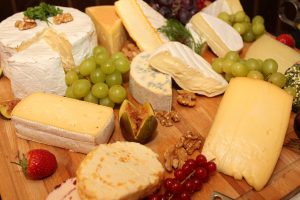 Soft touch
Soft touch
Soft, creamy cheeses such as brie and camembert coat the palate with a layer of soluble fat, masking tastes. Even if you are drinking an excellent red, you will loose some of its flavour. Team soft, creamy cheeses with extra-dry champagne and the effervescence will clean the fats from the palate.
Pungent cheeses and reds
If you must be awkward and insist on red with your cheese platter, choose a concentrated, rich red such as Amarone della Valpolicella. This Italian dry red is made from air-dried grapes and can stand up to the most pungent cheeses including Parmigiano-Reggiano and Pecorino. A cheaper alternative is Ripasso di Valpolicella made in the same region.
Port and cheese
A perfect partner at any restaurant or at a dinner party is port and creamy blue cheese. A non-vintage port is a perfect partner for creamy stilton, while vintage port pairs beautifully with feisty cheeses such as gorgonzola.
Epcurious.com wine expert Anthony Dias Blue says, "(Port has) an element known as rancio - a desirable, rich, oxidised quality, which meshes reliably with the luxurious flavours of such mould-laced cheeses."
Sweet whites for cheese
When serving a sumptuous cheese platter at a dinner party, remove the reds and opt for a fruity, vibrant white to complement your range of cheese. Sweet, spicy and fruity German wines such as gewrztraminers and rieslings are good all-rounders. For blue-veined cheeses, choose a sweet dessert wine. These will also work well if you are also serving desserts at the table.
Take time to taste what you eat
A campaign has been launched to encourage consumers to take time to taste their food after research showed that nearly 80% of people are unable to identify even basic sandwiches.
Busy, stressed workers are being encouraged to reawaken their taste buds by a leading psychologist after 60% of the population admitted to never or rarely tasting what they ate - 1,000 people were polled.  The majority of British workers eat at work most days with just 13% leaving for lunch, with only 28% saying they savour their food and almost half describing lunch as a means to an end to refuel their body.
The majority of British workers eat at work most days with just 13% leaving for lunch, with only 28% saying they savour their food and almost half describing lunch as a means to an end to refuel their body.
Incredibly, with Britain a multicultural melting pot of global cuisine, awareness levels around food nutrition and healthy eating never higher, it seems the ability to actually taste food is under threat.
The scientific research into the UK's lunchtime eating habits was commissioned by food brand Glorious! and led by Dr David Lewis with scientists at Mindlab.
The 1,000 participants were able to only correctly identify 35% of ingredients and most did not detect flavour swaps - 93% were unable to tell the difference between beef from Chinese pork, 92% couldn't tell ham from tuna, 82% could not detect Quorn from chicken, while 78% could not distinguish pork from chicken. Researchers found that, on average, 79% of people were unable to detect when basic flavours had been swapped, rising to 88% when people ate whilst distracted and 93% for people eating against the clock.
Dr David Lewis says: "The abundance of great flavours food experiences have never been more diverse, yet our findings suggest consumers are lazy when it comes to tasting and appreciating their food.
"I doubt there's ever been such a rich tapestry of food and flavour combinations at our disposal, yet we're not savouring what we eat, which is not just a shame but a genuine waste of taste.
"Apart from denying ourselves the pleasure that savouring tasty, well-cooked and presented food provides, there are other negative consequences of what Dr Brian Wansink has termed mindless eating."
Dr Lewis pointed out that eating inattentively results in insufficient chewing and bypasses the first stage of digestion resulting in indigestion, heartburn and an inadequate intake of essential nutrients.
Poor chewing also means we fail to savour and appreciate the true taste and texture of the meal and food goes down so rapidly that we have in fact overeaten by the time the stomach tells the brain it has had enough, causing unwanted weight gain.
Top tips to reawaken your taste buds include:
* Focus on what you are eating - not the TV
* Set aside time to enjoy food. Leave at least 15 minutes for a snack and 30 minutes for a full meal
* Chew the food carefully and take small mouthfuls
* Avoid talking while chewing. Not only does it prevent you paying full attention to your food but also causes you to swallow air.
*Avoid drinking too much while eating. Fluid not only distends the stomach but also dilutes the digestive enzyme in the mouth and the stomach's essential acid
* Eat with your eyes as well as your mouth. Anticipating how food will taste not only adds to your enjoyment but also triggers the release of enzymes ensuring good digestion.
What is the difference between veganism and vegetarianism?
Vegans and vegetarians choose not to eat meat. However, veganism is stricter and also prohibits dairy, eggs, honey, and any other items that derive from animal products, such as leather and silk.
Both veganism and vegetarianism are growing in popularity. However, some people may find the differences between these two diets a little confusing, particularly as there are several variations of vegetarianism.
Here we explore the similarities and differences between veganism and vegetarianism. We also discuss health benefits, which diet is more healthful, which is better for weight loss, and risks and considerations.
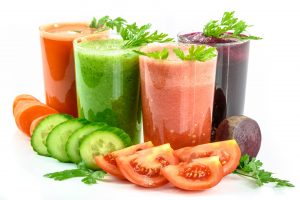 What is vegetarianism?
What is vegetarianism?
According to the Vegetarian Society, vegetarians are people who do not eat the products or by products of animal slaughter.
Vegetarians do not consume:
meat, such as beef, pork, and game * poultry, such as chicken, turkey, and duck * fish and shellfish * insects * rennet, gelatin, and other types of animal protein * stock or fats that derive from animal slaughter
However, many vegetarians do consume by products that do not involve the slaughter of animals. These include:
eggs * dairy products, such as milk, cheese, and yoghurt * honey
Vegetarians typically consume a range of fruits, vegetables, nuts, seeds, grains, and pulses, as well as “meat substitutes” that derive from these food types.
Vegetarianism is generally less strict than veganism, so there are several well-known variations of the vegetarian diet including Lacto-ovo-vegetarian, Lacto-vegetarian, Ovo-vegetarian, Pescatarian & flexitarian.
What is veganism?
Veganism is a stricter form of vegetarianism. Vegans avoid consuming or using any animal products or by products. The Vegan Society define veganism as “a way of living, which seeks to exclude, as far as is possible and practicable, all forms of exploitation of and cruelty to animals for food, clothing, or any other purpose.”
Vegans strictly avoid consuming any foods or beverages that contain:
meat * poultry * fish and shellfish * eggs * dairy products * honey * insects * rennet, gelatin, and other types of animal protein * stock or fats that derive from animals
Strict vegans also extend these principles beyond their diet and will try, where possible, to avoid any product that directly or indirectly involves the human use of animals. These products can include:
leather goods * wool * silk * beeswax * soaps, candles, and other products that contain animal fats, such as tallow * latex products that contain casein, which comes from milk proteins * cosmetics or other products that manufacturers test on animals
Many vegetarians also apply some of these principles to their lifestyle, for example, by avoiding leather goods and products that involve animal testing.
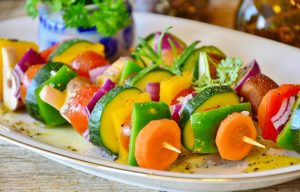 Health benefits
Health benefits
Scientific research suggests that vegetarian and vegan diets may offer several health benefits.
A recent study gave evidence suggesting that plant-based diets may offer a number of cardiovascular health benefits. These benefits include:
lower cholesterol levels
improved blood pressure and blood flow
better blood sugar control
a lower risk and even reversal of atherosclerosis
reduced oxidative stress and inflammation
The study also found an association between a healthy plant based diet and a lower risk of developing chronic kidney disease. Interestingly, those who followed an unhealthy plant based diet with a higher proportion of sugar-sweetened foods and refined grains had a significantly higher risk of chronic kidney disease.
Risks and considerations
Carefully planned vegetarian and vegan diets are “healthy, nutritionally adequate, and may provide health benefits in the prevention and treatment of certain diseases.” However, it is important for vegetarians and vegans to ensure that they are eating a balanced and healthful diet that meets all of their nutritional requirements.
For example, plant-based foods do not naturally contain vitamin B-12, which is an essential mineral that supports the nervous system and cardiovascular health. Vegans and vegetarians can get vitamin B-12 from fortified foods, such as breakfast cereals and some types of plant based “milk.”
Vegetarians and vegans can also take vitamin B-12 supplements. However, some B-12 supplements can contain animal products, so it is important to check products labels carefully and only purchase from reputable manufacturers.
Some vegetarians may not get enough vitamin B-6 and niacin from their diets, while vegans may have a higher risk of zinc and omega-3 deficiency than those who eat some animal products.

